
Which site would you like to visit?
By clicking the retail or wholesale site button and/or using rarewineco.com you are choosing to accept our use of cookies to provide you the best possible web experience.
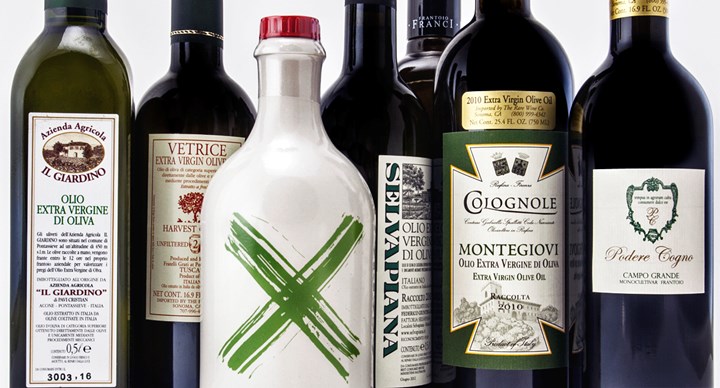
Looking for currently available olive oils? click here to order our 2024 Oils.
A great olive oil is one of Mother Nature’s most remarkable gifts—the essence of the olive, bursting with its own constellation of flavors and aromas, yet capable of marrying with a vast diversity of foods. And in our view, and the view of many, the world’s greatest olive oils come from Tuscany.
Our awakening to the glories of great Tuscan oil came in the mid-1980’s, when we had dinner one April night at the venerable Montalcino estate, Il Poggione.
They were rightly proud of their extra virgin olive oil, encouraging us to pour it on every dish short of dessert. It was exhilarating. We dipped and drizzled with abandon: over the thick Tuscan soup; on fennel bulbs; over the grilled meat, and on thick slices of toasted bread rubbed with garlic cloves.
What we didn’t realize at the time was that we were enjoying a precious commodity, as great Tuscan oil can only be made from tiny yields, and by harvesting early. A tree in the hills near Florence—harvested in November—may yield only a liter of olive oil. Compare this to the commercially farmed trees along Tuscany’s coast—harvested much later—which produce 20+ liters of oil per tree.
After our experience at Il Poggione, we were shocked to discover just how difficult it was to find comparable oils in the United States. Even the expensive oils available here didn’t come close to matching Il Poggione’s. In fact, most of the oils we found were tired, the result of being too old or improperly stored. We were also frustrated by the fact that few labels revealed the olive source or year of production.
We took matters into our own hands. Beginning in 1995, we began importing our own selections. Each November, we taste on site, before the oils are blended—selecting pressings that offer the most character, structure and balance.
We also have the trade’s strictest standards: offering only ruthlessly selected single estate oils; providing clear and informative labels; shipping under strict temperature control and offering the new oils as soon as they are pressed and bottled.
If we’ve become America’s best source for Tuscan olive oil, these are the reasons why.
Just as subtle differences in grape source and vinification can profoundly influence the quality of a wine, there are factors that separate great olive oils from merely good ones. Here are the most important of them:
While olive oil is produced throughout the Mediterranean, many feel that the greatest oils of all are produced in Tuscany’s interior hills-from old trees in poor soil and cool microclimates.
The best Tuscan olive oils are “early-harvest”—in other words they are made from physiologically mature olives that have not yet turned to black. Typically, such olives can be picked between late October and mid-November, producing oil with green color and intense flavors of artichoke and freshly cut grass.
Early-harvest oils also have extraordinary structure—plus the ability to withstand the four enemies of olive oil: age, heat, light and air. In fact, a good early-harvest oil , if properly stored, can keep for two or more years with ease. In contrast, most commercially available olive oils (including many expensive ones) already show noticeable deterioration six months after the harvest.
The explanation is that early-harvest olives have substantially more tannins which, as in wine, retard oxidation. Consequently, Tuscan olive oils that have a greenish color hold up much better after opening, maintaining their fresh aromas and flavors.
So why not harvest all the olives early and produce only great oil? It’s very labor-intensive, costly and slow. Early picking also produces much less oil from the same weight of olives. Our growers often obtain only one to two liters of olive oil per tree; the big commercial olive oil producers, who harvest in January or February, can get ten or more times that amount from a single tree.
For most top-quality producers, the extraction method of choice begins when the newly harvested olives are ground into a paste. The paste is then gently pressed to extract oil and water, with the water separated off either by gravity or by using a centrifuge. No chemicals or heat are used. It is also crucial that the fruit arrive at the frantoio , or “press house”, speedily and unbruised. Otherwise, the olives will oxidize and develop a high level of oleic acid.
The International Olive Oil Council (IOOC) has adopted oleic acid as a standard measure of quality; a high percentage indicates overripeness, damage or that olives have sat around too long before pressing. The IOOC permits the “Extra Virgin” label only if an oil has less than one gram of free acidity, expressed as oleic acid, per 100 grams of oil (1 percent).
In fact, top Tuscan oils have a fraction of the permitted level of oleic acid. This is due to their early harvest and the great care that goes into making them.
Most producers filter their oil, so they don’t have to explain to customers why there is sediment in the bottle, or why the oil is not crystal clear. Filtering also allows them to be less concerned with how the oil is stored and transported. But, as with wine, filtering can reduce the oil’s richness of texture. We prefer to buy oils that are settled by gravity and not filtered.
Top Tuscan oils have a window of optimal usability that is far greater than for other olive oils. During the first year of their lives, they are intensely flavored, with the peppery finish that Tuscans prize. As time goes on, they mellow, but if well-stored, will continue to offer exceptional flavor and aromatics.
One of the many popular misconceptions about olive oil is that it is best used for frying and salad dressings. True, the destiny of cheap oils may be to fry with, and the metier of light oils is to dress a salad. But a rich, aromatic top-rank Tuscan oil has a higher calling.
Great Tuscan olive oils come into their own when drizzled over foods, especially if the foods are warm. While fine Tuscan oils are wonderful for frying or sautéing, pouring a great oil over something warm magnifies its aromas, unleashing all of its power. Perhaps the most classic use for extra virgin olive oil is fettunta—grilled bread, drizzled with oil and served warm. (Before drizzling the oil, it is common to rub the bread with a garlic clove; the bread’s warmth melts the garlic.)
Even applying Tuscan oil to cold foods can be a sybaritic experience. Take, for example, something as simple as fresh mozzarella bathed in a rich Tuscan oil, seasoned just with salt and freshly ground pepper. Add some crusty bread to sop up the cheese-infused oil and ... Mamma mia! The Tuscans understand intuitively how to use their oils, and many of their methods are amazingly simple. For example, they drizzle their olio over grilled fish or meat; gently-cooked white beans or chick peas; raw vegetables like sliced fennel or baby artichokes; steamed asparagus; bruschetta of fresh tomato, basil and minced garlic; fava beans with Pecorino cheese; and any hearty, thick soup.
For more uses of Tuscan extra virgin oil, consult any good Tuscan or Italian cookbook.
2024 Vetrice Extra Virgin Olive Oil
Chianti Rufina. Yield 10%. Harvested Nov. 5-9.
A classic Rufina oil from the Grati family. This extra virgin is delicately perfumed, with scents of sweet thyme and thistle. The palate’s seductive roundness gives the oil wonderful mouthfeel, allowing the flavors to develop with time. Long and spicy.
2024 Prunatelli Extra Virgin Olive Oil
Chianti Rufina. Yield 10%. Harvested Oct. 25-31.
Our love affair with Rufina’s Prunatelli oliveto dates back to the 1995 harvest! Made largely from Frantoio olives, this year’s Prunatelli gives a supple palate impression, but there is plenty of structure behind it. Cinnamon heat builds up through the long, complex finish.
2024 Frascole Extra Virgin Olive Oil
Chianti Rufina. Yield 10%. Harvested early November.
Frascole’s organic farm intertwines olive trees with lush vineyards that wind along the hillsides of Dicomano near Rufina. The bouquet is filled with sweet thyme, with the fresh scent of recently mowed grass. Rich and robust flavors of the Frantoio olive variety take center stage, with a burst of artichoke notes that are round and harmonious. The finish builds with a heat and bitterness over time.
2024 Selvapiana Extra Virgin Olive Oil
Chianti Rufina. Yield 9%. Harvested early November.
Historically one of our most revered oils, Selvapiana is dark green as usual, exuding woodsy aromas of tree bark, smoke and artichoke. Similar flavors follow on the palate, bearing the hallmark flavors of Frantoio grown in the Rufina region. The finish is long and builds with time.
2024 Colognole Extra Virgin Olive Oil
Chianti Rufina. Yield 10%. Harvested mid-November.
The hillsides around Ancona in Northeastern Tuscany offer magical biodiversity. This year, the scion of a noble Tuscan family, Cesare Coda Nunziate, produced a classic Colongole oil from its groves, with sweet thyme and orange blossom in the bouquet. Round, sweet and slightly saline on the palate, the 2024 Colognole extra virgin oil ends with an arugula-like bitter edge that is so typical of this area.
2024 Castello di Volpaia Extra Virgin Olive Oil
Chianti Classico. Yield 9%. Harvested mid-November.
From old trees rooted on the slopes of Radda in Chianti, this year’s Volpaia oil boasts an expansive bouquet featuring artichoke, crushed basil and cumin. On the palate, it’s soft in its approach, but it quickly builds heat and depth in the finish. This is always one of our favorite oils.
2024 Pruneti Leccino Extra Virgin Olive Oil
Chianti Classico. Yield 11%. Harvested Oct. 16.
The Pruneti brothers make some of Tuscany’s most exciting single-varietal oils from groves in and around San Polo in Chianti. This year’s Leccino oil features a floral bouquet of almond blossom and carnation. On the palate, it reveals a complex interplay of flavors, featuring the intriguing essence of tomato leaf alongside a firm bitterness and warmth. These components come together and lead to a lingering finish that leaves a lasting impression.
2024 Pruneti Frantoio Extra Virgin Olive Oil
Chianti Classico. Yield 11%. Harvested mid-October.
Made entirely from Frantoio olives grown in and around San Polo in Chianti, this oil’s intense green color is accompanied by a complex bouquet featuring artichoke, tree bark, and bitter almond. Initially, the flavors are delicate, but they evolve to reveal notes of freshly chopped bitter herbs, along with a strong black pepper intensity that lingers in the finish.
2024 Franci Villa Magra Extra Virgin Olive Oil
Montenero. Yield 10%. Harvested early November.
Giorgio Franci has long been considered the superstar among Tuscan oil makers, and his Villa Magra is his flagship oil. This year’s Villa Magra selection was entirely made from Frantoio olives. The aromas are dark and brooding, weaving together the rich scent of aged leather, earthy tree bark notes, and the zesty essence of lemon oil. As the palate unfolds, there is a subtle green almond nuttiness with the sharpness of bitter herbs. The finish lingers, gradually intensifying with time.
2024 Franci Olivastra Seggionese Extra Virgin Olive Oil
Montenero. Yield 10%. Harvested early November.
The Olivastra Seggionese olive is known for producing an oil with a floral bouquet that has subtle rose aromas. This yellow-green oil is sweet, round and approachable on the palate, with flavor intensity building with the green, spicy finish. Another expertly crafted gem from Giorgio Franci.
2024 Sàgona “Sàgona” Extra Virgin Olive Oil
Pratomagno. Yield 10%. Harvested Nov. 8-15.
Daniele Corrotti is among the new generation of Tuscans who combine passion with deep knowledge to produce exceptional extra virgin olive oils. This year, his high-elevation Sàgona oliveto—in the Pratomagno mountains of Eastern Tuscany—ripened later than usual, coming in over a week after his Orciaia grove. This Moraiolo-derived oil has a bouquet that features notes of sweet tree bark and chicory. On the palate, it presents flavors reminiscent of sweet almond and orange peel, being riper and a little less green than the Orciaia oil. The finish has a lingering spice.
2024 Fonte di Foiano “1979” Extra Virgin Olive Oil
Bolgheri. Yield 10%. Harvested mid-October.
We discovered Fonte di Foiano just a few years ago and believe it to be one of the great oil-producing estates of Tuscany. From mostly ancient trees on the Bolgheri coast, Foiano’s olives benefit from the area’s more temperate climate, and so they are traditionally harvested earlier and greener than in other parts of Tuscany. This year’s 1979—made entirely from Leccio del Corno olives—is a brilliant green. Aromas of bitter almond and thistle create intense layers of complexity. However, the finish is not aggressive and leans more toward menthol than heat.
2024 Franci Grand Cru Extra Virgin Olive Oil
Montenero. Yield 10%. Harvested early November.
Grand Cru is Giorgio Franci’s top oil and, year after year, considered to be Tuscany’s most perfect oil. This year’s selection features bold aroma, highlighted by prominent notes of green cardoon and hints of Asian spice. On the palate, it is expansive, showcasing depth, salinity and complexity. The finish brings back green notes, concluding with lingering hot pepper.
2024 Elaine Trigiani “Olio della Donna” Extra Virgin Olive Oil
Chianti Classico. Yield 10%. Harvested Oct 16-22.
We just love the artisanal oils of Elaine Trigiani. This year’s selection is a field blend of Moraiolo, Frantoio, Leccino and Morcone from small oliveti in the Val di Pesa area in the Chianti Classico zone. A minerality underlies the bouquet of tree bark, chicory and anise. On the palate, it is saline and pure, with nice bitterness and depth. It finishes with cinnamon and aleppo pepper heat.
2024 Carnasciale Extra Virgin Olive Oil
Valdarno. Yield 11%. Harvested early November.
The Rogosky family of Il Carnasciale is collaborating with the University of Florence to study the effects of time and rotation speed when milling. Their oil, predominantly Frantoio from groves overlooking the Arno River in Eastern Tuscany, is bright and aromatic, with aromas of tree bark, lemon zest and artichoke. On the palate, it has a classic Tuscan bitterness, with spicy arugula notes on the finish.
2024 Sàgona “Orciaia” Extra Virgin Olive Oil
Pratomagno. Yield 9%. Harvested Nov. 2-4.
Daniele Corrotti’s 2024 Orciaia olive oil is a blend of 40% Leccino, 40% Moraiolo, and 20% Frantoio. It features sweet aromas of freshly chopped herbs, followed by a balance of heat and classic Tuscan bitterness on the palate. The finish is long and persistent.
2024 Melograno Extra Virgin Olive Oil
Chianti Classico. Yield 11%. Harvested mid-November.
Castellina in Chianti’s Valeria Ronconi is the Grande Dame of Tuscan Olive Oil, with more than a half century of experience. But now that she’s in her 80s, she only makes a tiny amount of oil, mostly for The Rare Wine Co. This year’s selection is a true field blend featuring a variety of local olives, including Moraiolo, Frantoio, Leccino, Pendolino and Leccio di Corno. The bouquet presents notes of artichoke, menthol and licorice. On the palate, you can taste hints of leather, lemon oil and artichoke. Picante heat is featured in the beguiling finish.
2024 Fonte di Foiano Grand Cru Extra Virgin Olive Oil
Bolgheri. Yield 9%. Harvested Oct. 15-17.
Fonte di Foiano’s Grand Cru from Bolgheri is a single varietal oil made from Picholine olives, which are rare in Tuscany. On the nose, this oil features aromas of freshly cut grass, chicory, tomato and arugula. These vibrant green flavors are also evident on the palate, culminating in a finish that includes hints of chili pepper and spiciness.
| Year | Description | Size | Notes | Avail/ Limit |
Price | |
|---|---|---|---|---|---|---|
 2024
2024
|
2024 Colognole Extra Virgin Olive Oil 500 mL | 500 mL | 6 | $32.50 | add | |
 2024
2024
|
2024 Fonte di Foiano 1979 Extra Virgin Olive Oil 500 mL | 500 mL | 6 | $39.95 | add | |
 2024
2024
|
2024 Franci Olivastra Seggianese Extra Virgin Olive Oil 500 mL | 500 mL | 6 | $42.50 | add | |
 2024
2024
|
2024 Franci Villa Magra Extra Virgin Olive Oil 500 mL | 500 mL | 6 | $39.95 | add | |
 2024
2024
|
2024 Frascole Extra Virgin Olive Oil 500 mL | 500 mL | 6 | $34.95 | add | |
 2024
2024
|
2024 Prunatelli Extra Virgin Olive Oil 500 mL | 500 mL | 6 | $34.95 | add | |
 2024
2024
|
2024 Pruneti Frantoio Extra Virgin Olive Oil 500 mL | 500 mL | 6 | $36.50 | add | |
 2024
2024
|
2024 Pruneti Leccino Extra Virgin Olive Oil 500 mL | 500 mL | 6 | $36.50 | add | |
 2024
2024
|
2024 Sagona Extra Virgin Olive Oil 500 mL | 500 mL | 6 | $39.95 | add | |
 2024
2024
|
2024 Selvapiana Extra Virgin Olive Oil 500 mL | 500 mL | 6 | $37.50 | add | |
 2024
2024
|
2024 Vetrice Extra Virgin Olive Oil 500 mL | 500 mL | 6 | $34.95 | add | |
 2024
2024
|
2024 Castello di Volpaia Extra Virgin Olive OIl 500 mL | 500 mL | 6 | $34.95 | add |
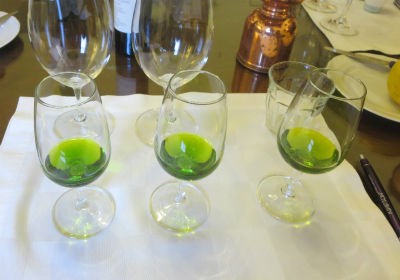 Article
Article
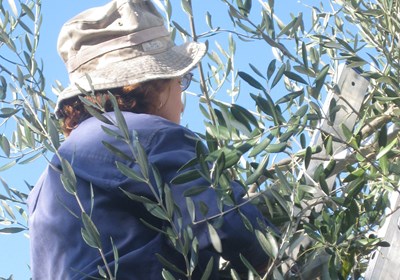 Article
Article
 Article
Article
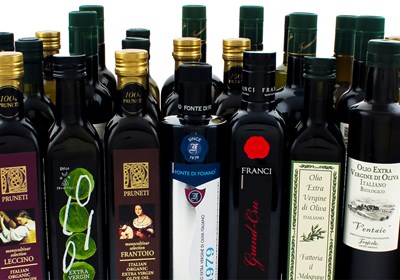 Event
Event
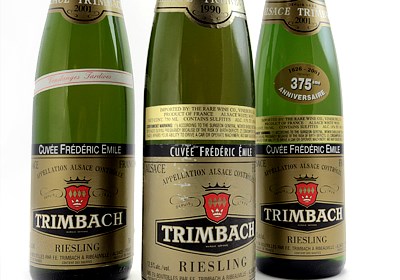 Article
Article
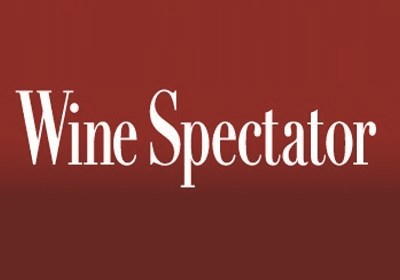 Press
Press
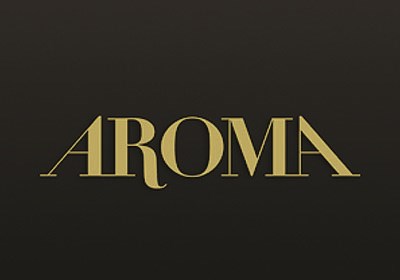 Press
Press
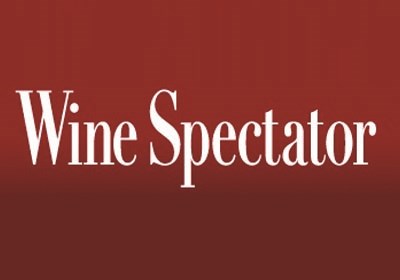 Press
Press
 Press
Press

New discoveries, rare bottles of extraordinary provenance, limited time offers delivered to your inbox weekly. Be the first to know.
Please Wait
Adding to Cart.
...Loading...
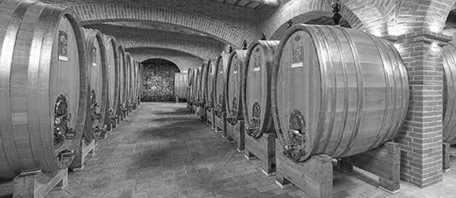

By clicking the retail or wholesale site button and/or using rarewineco.com you are choosing to accept our use of cookies to provide you the best possible web experience.

